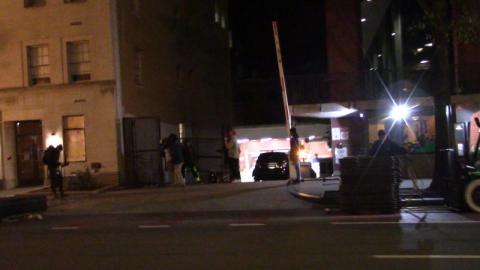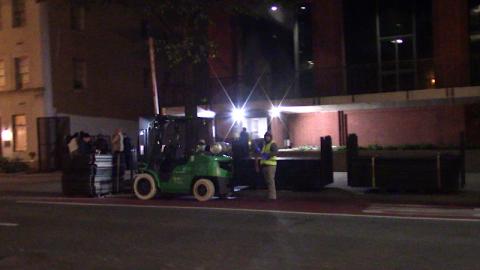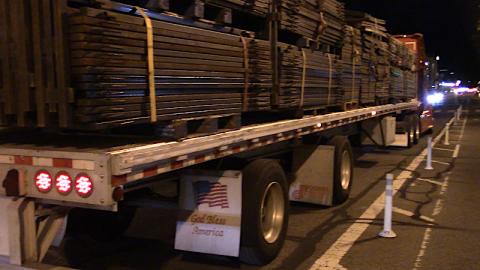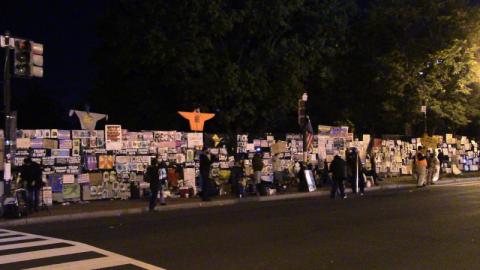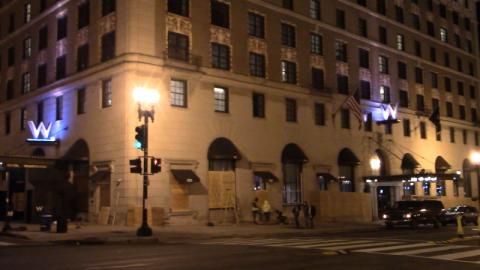Last-minute prep in "prewar" Washington: Fence, National Guard-and facial recognition
On the 2nd of November, a small number of protesters faced off against "Jesus freaks" on BLM Plaza. Nearby, crews raced to install a high fence around the White House and buildings all over downtown were still furiously boarding up. This as reports of National Guard mobilizations circulated and the Washington Post called out Park Police for using facial recognition software against at least one George Floyd protester.
This tactical note about the fence appeared on Twitter:
"Hey #DCProtests, FYI about this fence. You won’t be able to completely push it over unless you unlatch it at the ends. If you SKIP that step, you will feel like it’s gonna come down just by pushing but it won’t! And the people who climb over while it’s horizontal will get stuck." Note that during J20 (2017 Inauguration) police used zip ties to reinforce the joints in the fence, a pair of "dykes clippers" (wire cutting pliars) will easily cut these off, and these are what police used to cut these off of arrestees
Also on Nov 2, it was revealed that 200 National Guard members have been placed on standby for riot (etc...) duty in DC, and similar "warning notices" have gone out to National Guard members in several states. In addition, both the US Marshall's Service and the federal Bureau of Prisons have mobilized their riot teams. While the BOP is rioting in the streets would of course be a good time for uprisings in Federal prisons.
On top of all else, the Washington Post has confirmed that facial recognition has been used to identify at least one protester for prosecution after the June 1 protests over the murder by police of George Floyd. Protesters engaging in direct action can protect themselves by wearing dark sunglasses as well as their COVID masks. This denies access to the tip of the nose and both eyes, depriving facial recognition programs of all three of the "anchor points" normally used to build up a numerical picture of someone's face. With COVID-19 raging, nobody will look unusual in a mask and dark sunglasses!
The facial recognition database in question is called the the National Capital Region Facial Recognition Investigative Leads System or NCRFRILS. It was used to find a person being accused of allegedly punching a cop to the ground as Federal police opened fire on protesters with tear gas to make way for Donald Trump's Bible-thumping photo op at St John's Church. Photos taken from Twitter were compared to this database and returned a match. If this database were to be encrypted with ransomware or otherwise corrupted beyond repair, it could spare participants in upcoming election-related action years in prison or a year plus living in fear before jury nullification kills the charges J20-style. The same thing could also be achieved by activists closing social media accounts bearing photos of themselves and media makers NOT uploading photos or video images of people engaging in direct action. Either no images of the targets in NCRFRILS or no images to compare them to can deny police these matches.

